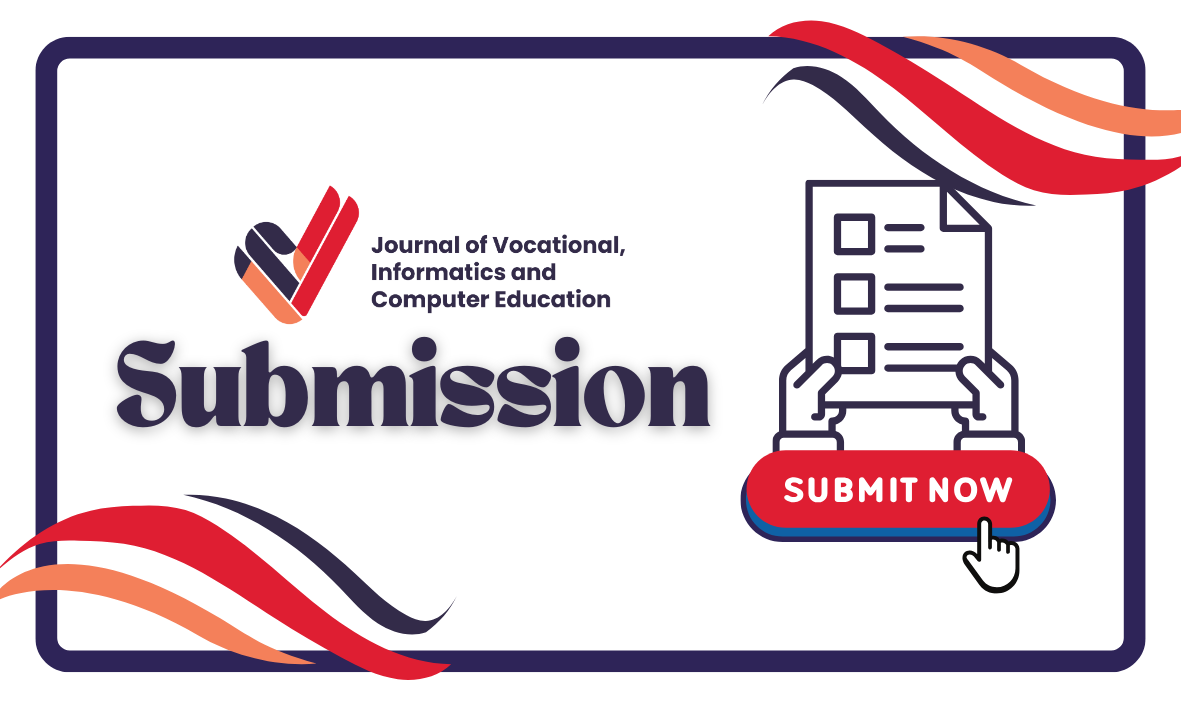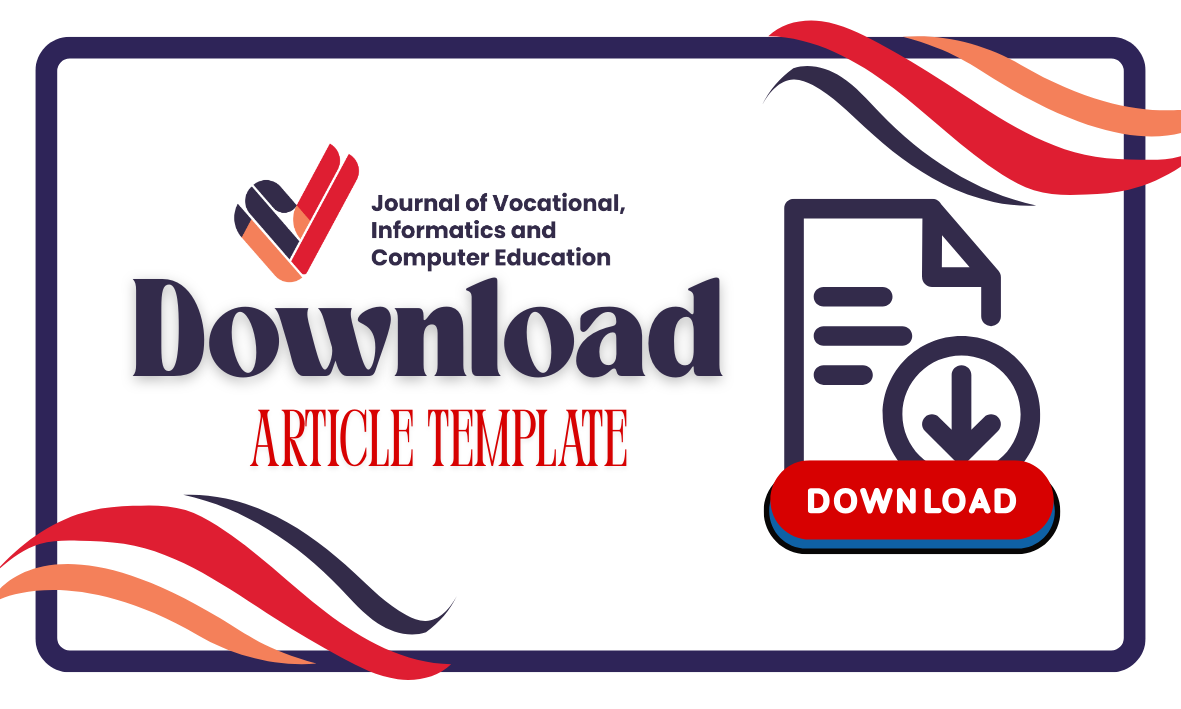Persepsi Mahasiswa terhadap Infrastruktur Pendidikan dan Integrasi Computational Thinking di Perguruan Tinggi
Student Perceptions of Educational Infrastructure and Integration of Computational Thinking in Higher Education
DOI:
https://doi.org/10.61220/21tmsg76Keywords:
Critical Thinking, Creative Thinking, Computational Thinking, 21st Century SkillsAbstract
The disparity in educational infrastructure across universities in Indonesia presents a significant barrier to the integration of computational thinking (CT) in higher education. This study aims to explore students’ perceptions of educational infrastructure development and the integration of CT in university learning. A descriptive quantitative method was employed using a Likert-scale questionnaire distributed to 73 university students. The results show that students perceive CT as highly relevant for enhancing critical thinking and problem-solving skills, with strong support for its integration into curricula. However, perceptions regarding the adequacy of educational infrastructure in Indonesia remain neutral to negative. Students also highlighted the importance of teacher and parent roles, as well as equitable access to professional training for successful CT implementation. These findings suggest that while awareness of CT’s relevance is high, systemic improvements in infrastructure and educator capacity are essential to support effective implementation in higher education.
Downloads
References
[1] S. M. S. Selamat, M. M. K. Nasir, And N. H. Adnan, “Investigation Of Computational Thinking Skills Through Instructional Techniques, Games And Programming Tools,” International Journal Of Learning, Teaching And Educational Research, Vol. 23, No. 10, Pp. 435–452, Oct. 2024, Doi: 10.26803/Ijlter.23.10.21.
[2] A. G. V. Osorio And T. M. Cabreira, “The Impact Of Computational Thinking Pillars On The Development Of Bncc Competencies Through The Micro:Bit,” In Anais Do Xxxv Simpósio Brasileiro De Informática Na Educação (Sbie 2024), Sociedade Brasileira De Computação - Sbc, Nov. 2024, Pp. 2887–2895. Doi: 10.5753/Sbie.2024.244985.
[3] L. S. Danindra, Masriyah, And U. Hanifah, “Computational Thinking Processes Of Junior High School Students In Solving Problems Of Number Patterns In Terms Of Gender Differences,” Shs Web Of Conferences, P., 2022, Doi: 10.1051/Shsconf/202214901012.
[4] E. P. Mariana And Y. Kristanto, “Integrating Steam Education And Computational Thinking: Analysis Of Students’ Critical And Creative Thinking Skills In An Innovative Teaching And Learning,” Southeast Asian Mathematics Education Journal, P., 2023, Doi: 10.46517/Seamej.V13i1.241.
[5] M. Romero, A. Lepage, And B. Lille, “Computational Thinking Development Through Creative Programming In Higher Education,” International Journal Of Educational Technology In Higher Education, Vol. 14, P., 2017, Doi: 10.1186/S41239-017-0080-Z.
[6] T. Da Silva, J. Melo, And P. Tedesco, “The Creative Process In The Development Of Computational Thinking In Higher Education,” Pp. 215–226, 2020, Doi: 10.5220/0009346502150226.
[7] C. Carter Et Al., “Defining Steam Approaches For Higher Education,” European Journal Of Stem Education, P., 2021, Doi: 10.20897/Ejsteme/11354.
[8] M. Bassachs, D. Cañabate, L. Nogué, T. Serra, R. Bubnys, And J. Colomer, “Fostering Critical Reflection In Primary Education Through Steam Approaches,” Educ Sci (Basel), P., 2020, Doi: 10.3390/Educsci10120384.
[9] F. Paraskeva And E. Neofotistou, “Digital Creativity And Problem-Solving In Higher Engineering Education: Developing An E-Course Using The Educational Affordances Of Steam Methodology,” Human Interaction And Emerging Technologies (Ihiet-Ai 2024): Artificial Intelligence And Future Applications, P., 2024, Doi: 10.54941/Ahfe1004588.
[10] Oecd, “Pisa 2018 Results (Volume I): What Students Know And Can Do,” 2019. Doi: 10.1787/5f07c754-En.
[11] K. Pendidikan And Dan Teknologi, “Laporan Kinerja Kementrian Pendidikan, Kebudayaan, Riset, Dan Teknologi Tahun 2022,” Feb. 2023.
[12] Japan International Cooperation Agency (Jica), “Indonesia Ministry Of Education, Culture, Research And Technology (Moecrt) Data Collection Survey On Higher Education And Vocational Education Sectors In Indonesia Final Report,” 2022.
[13] Yuliati, “Internationalisation Of The Curriculum At One Indonesian University,” 2022.
[14] A. Parnawi Sekolah Tinggi Agama Islam Ibnu Sina Batam, U. Sagena, And M. Sulaiman Kurdi, “Transformasi Digital Dalam Pembelajaran,” 2023. [Online]. Available: Https://Www.Researchgate.Net/Publication/373139160
[15] A. Iskandar Et Al., Peran Teknologi Dalam Dunia Pendidikan. 2023.
[16] I. Yuliana Et Al., “Computational Thinking Lesson In Improving Digital Literacy For Rural Area Children Via Cs Unplugged,” J Phys Conf Ser, Vol. 1720, P., 2021, Doi: 10.1088/1742-6596/1720/1/012009.
[17] T. Bell And M. Lodi, “Constructing Computational Thinking Without Using Computers,” Constructivist Foundations, Vol. 14, Pp. 342–351, 2019, [Online]. Available: Https://Consensus.App/Papers/Constructing-Computational-Thinking-Without-Using-Bell-Lodi/2c9b7385d0c85846b493dc0fc771c50d/
[18] C. Brackmann, M. Román-González, G. Robles, J. Moreno-León, A. Casali, And D. Barone, “Development Of Computational Thinking Skills Through Unplugged Activities In Primary School,” Proceedings Of The 12th Workshop On Primary And Secondary Computing Education, P., 2017, Doi: 10.1145/3137065.3137069.
[19] J. W. Creswell, Research Design: Qualitative, Quantitative, And Mixed Method Approaches. 2014.
[20] E. P. Mariana And Y. Kristanto, “Integrating Steam Education And Computational Thinking: Analysis Of Students’ Critical And Creative Thinking Skills In An Innovative Teaching And Learning,” Southeast Asian Mathematics Education Journal, P., 2023, Doi: 10.46517/Seamej.V13i1.241.
[21] T. Da Silva, J. Melo, And P. Tedesco, “The Creative Process In The Development Of Computational Thinking In Higher Education,” Pp. 215–226, 2020, Doi: 10.5220/0009346502150226.
[22] P. Kakavas, “Computational Thinking And Creativity In K‐6 Education,” P., 2020, [Online]. Available: Https://Consensus.App/Papers/Computational-Thinking-And-Creativity-In-K%E2%80%906-Education-Kakavas/D47ffa32152e5bb1b37c601e144c3b2a/
[23] N. Saidin, F. Khalid, R. Martín, Y. Kuppusamy, A. Nalini, And P. Munusamy, “Benefits And Challenges Of Applying Computational Thinking In Education,” International Journal Of Information And Education Technology, Vol. 11, Pp. 248–254, 2021, Doi: 10.18178/Ijiet.2021.11.5.1519.
[24] T.-C. Hsu, “A Study Of The Readiness Of Implementing Computational Thinking In Compulsory Education In Taiwan,” Computational Thinking Education, P., 2019, Doi: 10.1007/978-981-13-6528-7_17.
[25] B. Mohammed, I. Mohammed, H. Ahmed, And A. E. A. El-Naser, “Effectiveness Of Psycho-Educational Program On Perception And Obstacles Regarding Electronic Learning Among Nursing Students,” Journal Of Public Health And Development, P., 2023, Doi: 10.55131/Jphd/2023/210310.
[26] J. Krishnaswamy, Z. Hossain, M. K. Kavigtha, And A. Nagaletchimee, “What Matters For Higher Education Success Of Private Educational Institutions? Senior Students’ Perceptions In Malaysia,” Journal Of Applied Research In Higher Education, P., 2019, Doi: 10.1108/Jarhe-07-2018-0142.
[27] Syafruddin, W. Suastra, And W. Lasmawan, “Implementation Of The Merdeka Curriculum And Readiness Of Educational Infrastructure In Elementary Schools,” Jisip (Jurnal Ilmu Sosial Dan Pendidikan), P., 2024, Doi: 10.58258/Jisip.V8i3.7178.
[28] A. Gbadebo, “Digital Transformation For Educational Development In Sub-Saharan Africa,” International Journal Of Social Science And Religion (Ijssr), P., 2024, Doi: 10.53639/Ijssr.V5i3.262.
[29] B. R. Aditya, R. Ferdiana, And S. S. Kusumawardani, “Digital Transformation In Higher Education: A Barrier Framework,” 2021 3rd International Conference On Modern Educational Technology, P., 2021, Doi: 10.1145/3468978.3468995.
[30] C. Tofel-Grehl, K. Searle, And D. Ball, “Thinking Thru Making: Mapping Computational Thinking Practices Onto Scientific Reasoning,” J Sci Educ Technol, Vol. 31, Pp. 730–746, 2022, Doi: 10.1007/S10956-022-09989-6.
[31] S. Syuraini, H. Hidayat, F. Arini, And J. Jamaris, “Exploring Factors Of The Parent-Teacher Partnership Affecting Learning Outcomes: Empirical Study In The Early Childhood Education Context,” International Journal Of Instruction, P., 2022, Doi: 10.29333/Iji.2022.15423a.
Downloads
Published
Issue
Section
License
Copyright (c) 2025 M. Nurul Fajri, Ruslan Kadir, Putri Nirmala, Rachmawaty Kadir, Rahmawati (Author)

This work is licensed under a Creative Commons Attribution-ShareAlike 4.0 International License.




















 Email : voice@lontaradigitech.com
Email : voice@lontaradigitech.com
